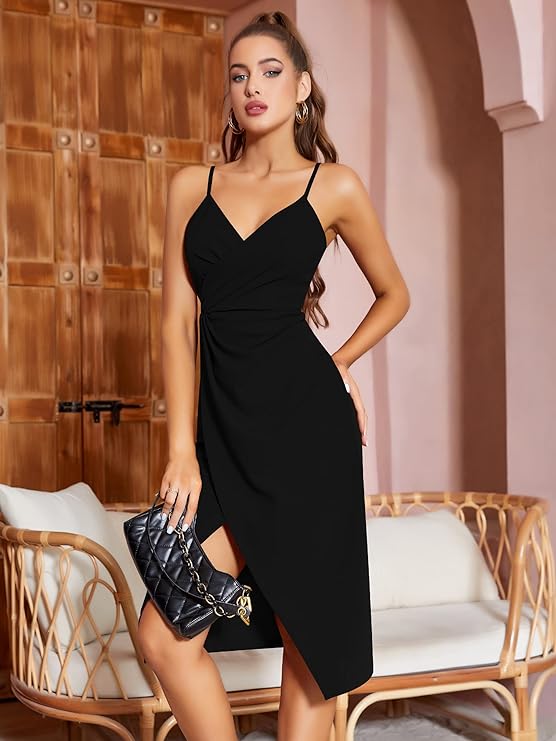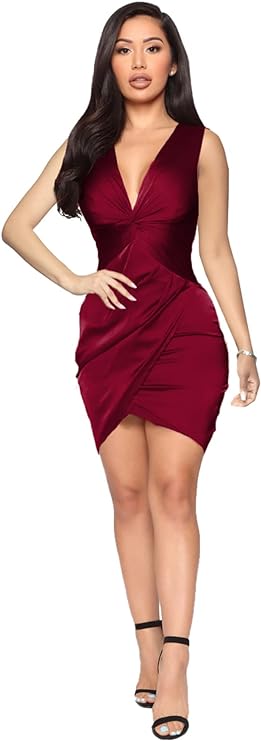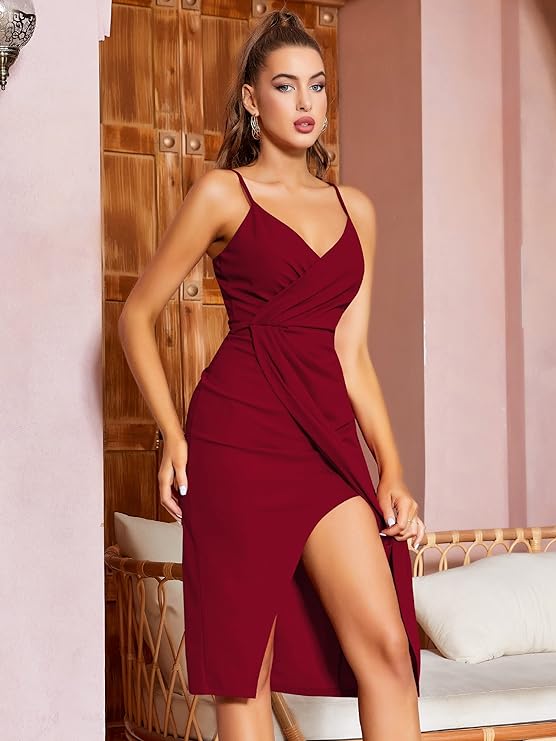The Origin and Evolution of the Cocktail Dress
The cocktail dress emerged in the 1920s, a time known as the “Jazz Age,” when social norms and fashion underwent significant changes. Initially, these garments were designed for semi-formal events held in the early evening, bridging the gap between day-wear and ballgowns. With the influence of designers like Coco Chanel, the cocktail dress gained popularity for its elegance and simplicity. Typically, they were shorter than formal evening gowns, offering more freedom of movement and a sense of modernity.
Over the decades, cocktail dresses have evolved alongside shifts in fashion and society. Each era brought its own interpretation, adapting hemlines, silhouettes, and materials to the tastes of the time. From the elaborate flapper dresses of the roaring twenties to the structured sheath dresses of the sixties, cocktail attire expanded its reach and significance. Today, the essence of the cocktail dress still honors its original purpose – a versatile and elegant option for special occasions.

Decoding the Dress Code: When to Wear a Cocktail Dress
Understanding when to don a cocktail dress requires decoding the often ambiguous dress codes that appear on invitations and event announcements. Typically, cocktail attire is appropriate for events that are too formal for business casual but not formal enough for black-tie affairs. These include work functions, holiday parties, weddings, and, of course, cocktail parties.
When an invitation indicates “cocktail attire,” it suggests a degree of sophistication and glamour, calling for a dress that is tasteful, elegant, and appropriate for the evening. While cocktail dresses are versatile, it’s important to tailor the choice of dress to the specific event – a corporate cocktail function may demand a more conservative style, while a friend’s engagement party might allow for bolder decisions in style and color. Understanding the event’s context and anticipated formality is key to selecting the perfect cocktail dress.
Defining Characteristics of Cocktail Dresses
Cocktail dresses are characterized by their length, typically falling just above the knee to just above the ankle (known as tea length). They are made in a variety of cuts and designs, but they commonly reflect a sense of sophistication and formality. Details such as necklines, sleeve length, and fabric choice are what personalize a cocktail dress and tailor it to individual style and the nature of the event.

Some popular styles include the classic ‘little black dress,’ A-line dresses, and more contemporary cuts that feature asymmetrical lines or unique detailing. Fabrics range from luxurious silks and satins to intricate lace and modern synthetics that add texture and interest. Color is an essential element as well; while black is traditional and universally flattering, vibrant hues and patterns can make a statement and set a festive tone for the event.
Selecting the Right Cocktail Dress for Your Body Type
Choosing a cocktail dress is not only about style and occasion but also about celebrating and flattering one’s body type. A well-selected cocktail dress should highlight an individual’s best features and fit comfortably. For a pear-shaped body, A-line dresses that gently flare out from the waist can balance the silhouette. Those with an hourglass figure might opt for fitted styles that accentuate the waist.
For individuals with an apple-shaped body, dresses featuring empire waists or A-line cuts can provide a flattering profile. Straight or ‘rectangular’ body types can add curves with ruched or wrapped styles that create the illusion of a more defined waistline. Petite women may lean towards shorter dresses to elongate their legs, while those who are tall can showcase their height with a midi-length cocktail dress. Knowing and embracing your body type will guide you toward a dress that not only looks stunning but also feels great to wear.

Accessorizing Your Cocktail Dress
Accessorizing is key to elevating a cocktail dress and finalizing the look. The right accessories should complement the dress, not overshadow it. Jewelry selection will depend on the dress’s details – a high neckline might call for statement earrings instead of a necklace, while a plunging V-neck might be perfectly paired with a simple pendant.
Shoes play a crucial role in completing the ensemble. They should be chosen not only for style but comfort, considering the length of time spent standing or dancing. Clutches are a classic accompaniment to a cocktail dress, adding sophistication while carrying essentials. Finally, consider outerwear. A sleek blazer or a refined shawl can provide warmth without detracting from the elegance of the cocktail dress.

Care and Maintenance of Your Cocktail Dress
To ensure the longevity of your cocktail dress, proper care and maintenance are necessary. Follow the specific cleaning instructions on the label – some dresses may require dry
cleaning, while others can be hand-washed or machine-washed on delicate settings. Always use appropriate detergents and avoid harsh chemicals that can damage delicate fabrics. Storing your cocktail dress correctly is also crucial to maintaining its appearance. Use padded hangers to preserve the shape of the dress and prevent stretching or distortion. For long-term storage, a garment bag will protect the dress from dust and light, which can fade colors over time.
Avoid folding your cocktail dress to prevent creases or wrinkles; if wrinkles do occur, steaming is typically a safe way to remove them without harming the fabric. Steaming is often preferable to ironing, as it is less likely to damage sensitive materials. For beaded or sequined dresses, extra care should be taken during cleaning and storage to prevent embellishments from becoming loose or falling off. Since cocktail dresses can be a significant investment, it’s worthwhile to invest in professional cleaning and preservation for particularly valuable or cherished items. This is especially relevant for dresses made from materials like silk or those with intricate details and decorations.
Choosing a Cocktail Dress for Every Season
Spring and Summer Cocktail Dresses
During the spring and summer months, cocktail dresses take on a lighter and brighter aura. Opt for breathable fabrics such as cotton blends, linen, or chiffon to stay cool and comfortable in warmer weather. Floral prints, pastels, and vibrant colors reflect the season’s joyous mood. Sleeveless, strapless, or short-sleeved dresses are popular choices that allow for greater movement and offer a playful yet sophisticated look.

As these seasons often include outdoor events, consider the venue and choose dresses and accessories that accommodate the setting—such as wedge heels for garden parties to avoid sinking into the grass. Lightweight scarves or elegant boleros can provide coverage during cooler evenings without compromising the seasonal feel of your outfit.
Fall and Winter Cocktail Dresses
The cooler months call for cocktail dresses made from warmer, more substantial fabrics, like velvet, brocade, or heavier satins. Long sleeves, higher necklines, and longer hemlines can provide additional warmth while still maintaining elegance. Darker shades and jewel tones often dominate the season’s color palette, exuding a sense of warmth and luxury.
For fall and winter cocktail events, it’s also important to consider layers that complement the dress. Sophisticated wraps, tailored coats, or even elegant capes can be perfect for staying warm while traveling to and from events. Thermal or opaque tights paired with closed-toe pumps or ankle boots can also be both stylish and practical for chilly weather.
Conclusion: Embracing Elegance with the Perfect Cocktail Dress
The cocktail dress embodies an essential piece of women’s fashion that balances elegance with functionality. It has evolved over the years but continues to hold a special place in the evening wear category. With proper understanding, selection, and care, a cocktail dress can serve as a versatile and timeless addition to any wardrobe, capturing the essence of feminity and sophistication.
Choosing the perfect cocktail dress involves considering the occasion, season, personal style, body type, and desired level of comfort. When complemented with the right accessories and cared for appropriately, it becomes much more than just an outfit—it becomes a cherished part of cherished memories, a reflection of one’s style, and a celebration of one’s individuality. With each cocktail dress comes the opportunity to make a statement, leave a lasting impression, and embrace the joy of dressing up.
Whether attending a swanky soirée or an intimate gathering, let the cocktail dress be the vessel through which elegance and confidence shine. After all, it’s not just about the dress; it’s about the amazing woman wearing it.
